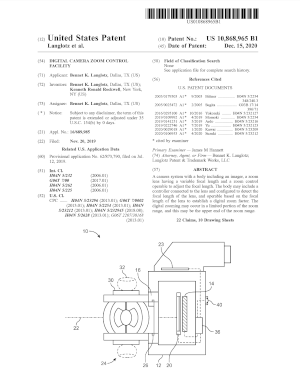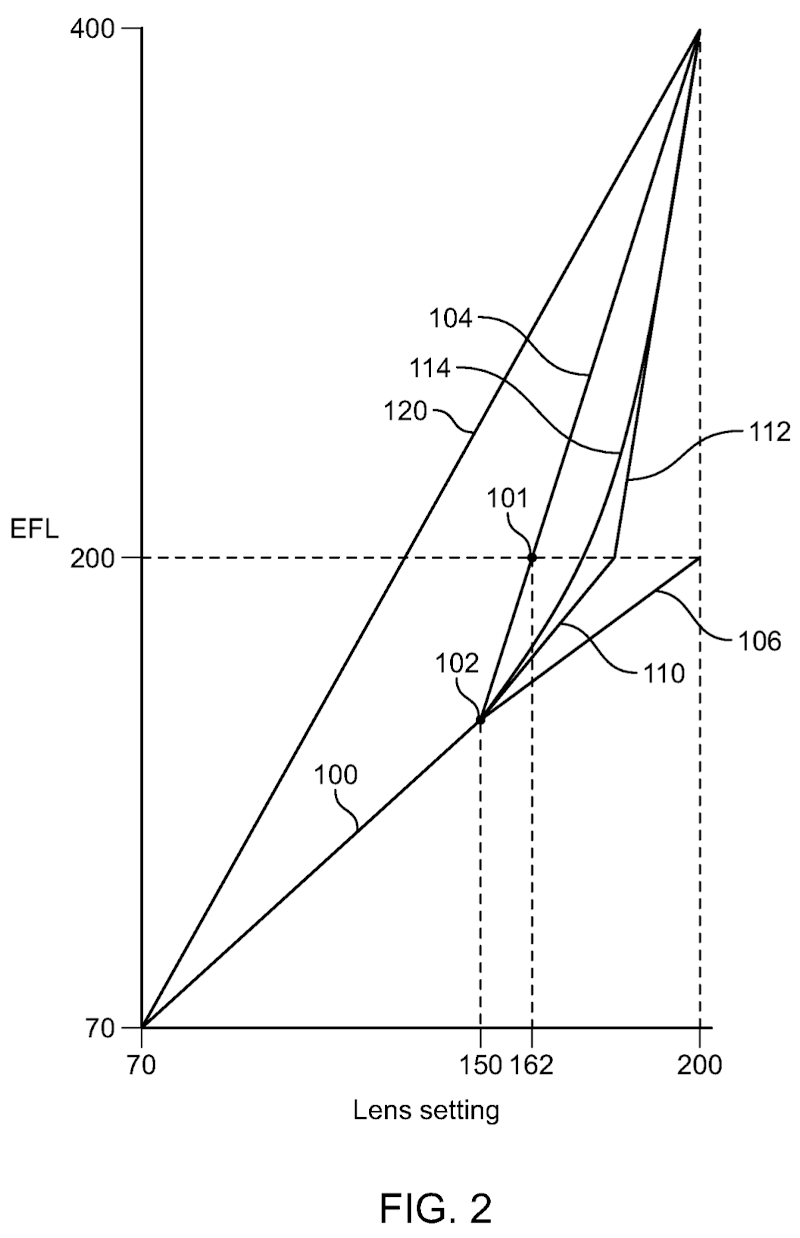Rockwell’s Digital Zoom Patent
In February, Ken Rockwell announced that he had a patent granted for an invention concerned with smart cropping. In this article we will take a closer look at what is actually in the patent.

If you are not familiar with Ken Rockwell then you should know that his website is mostly about photography and that he has some slightly “unique” opinions and content on there, about a wide variety of subjects. If you have never heard of him, go check it out and form your own impressions.
The announcement was reported at several photo and video websites and the reaction in comments and forums tended towards being negative, with a lot of people misunderstanding the patent or claiming it to be not very useful for professional photographers.
Obtaining patents is relatively cheap, as long as you can explain the concept clearly to a good patent lawyer so that they can quickly understand what you are trying to protect and the patent examiner finds the invention to be mostly new. Challenging patents, protecting against infringement or defending against claims of infringement is for people with deep pockets.
Let us look at the patent in more detail but before we do, please note that this is not a legal opinion or legal advice. The patent is US 10,868,965 B1, dated December 15th, 2020 with the title “Digital Camera Zoom Control Facility”. The inventors are Bennet Langlotz and Kenneth Rockwell.
When reading a patent you can jump directly to the claims which are the key points of the invention and can allow you to quickly ascertain what the invention is covering, the detailed description explains how someone would make the best version or implementation of the invention. The background and detailed description give context to the claims and must be read in conjunction with the claims.
In order to analyze the patent, let’s look at claim 1:
“A camera system comprising:
a body including an imager element;
a zoom lens having a variable focal length
the lens having a zoom control operable to adjust the focal length;
the body including a controller connected to the lens and
configured to detect the focal length of the lens;
the controller being operable based on the focal length of
the lens to establish a digital zoom factor;
the digital zoom factor being based on a digital zoom
function having a maximum at the greatest focal length
setting of the lens;
wherein the digital zoom function includes a transition
from no digital zoom at an initial selected focal length
to the maximum at the greatest focal length;
wherein the initial focal length is at an intermediate
position between the minimum focal length and the
maximum focal length; and
wherein the initial focal length is closer to the maximum
focal length than the minimum focal length.”
From this we can quickly see that there is quite a lot of specific detail here. Let’s break it down:
- There is a camera with a body and image sensor and a lens with variable focus - sounds like most cameras,
- The lens has a zoom control - sounds like a zoom lens,
- The camera processor detects the focal length of the lens - sounds like information captured and stored by most cameras in EXIF metadata,
- The processor determines the digital zoom amount from the focal length - could be novel, depends on how it arrives at the zoom amount,
- The digital zoom function is maximum at the largest focal length - possibly novel to map the maximum digital zoom to the end of the lens zoom mechanism,
- The zoom function has a transition zone - could be novel, I don’t know if there is prior art for this,
- The initial focal length is in between the minimum and maximum focal length - sounds like any camera,
- The initial focal length is closer to the maximum than the minimum - sounds like a slightly weird default but I’ll accept it could be novel
The image below, taken from the patent, shows how the Effective Focal Length (EFL) which is the combination of optical and digital zoom, could be mapped from the Lens setting (actual optical zoom setting):

Reading through the description, the camera may save images as it is analyzing the focal length and determining what is in focus and focal stacks may be saved, as the user manually changes the focal length of the lens. There is some degree of automatic image capture to storage beyond the usual capture + process + display/show in-focus points. The patent then goes on to argue the advantages of its method over cropping and zooming in post of which this is basically a live version. It also includes a quality metric to limit the amount of digital zoom to avoid bad images.
Aside from claim 1, there are two other independent claims: claim 9 is a version where you can set a focal length up to which there is no digital zoom but after that point there is digital zoom which goes to maximum only when the optical focal length is set to its maximum. Claim 18 is a version where the user can set a focal length and above this value there are two zones which each have different functions controlling the digital zoom.
As implied by the name, the dependent claims modify the independent claims and usually add the “bells and whistles”, so the main novelty is always in the independent claims.
A lot of comments on forums were from people who had not read the patent and inferred that the invention was simply digital zoom. We can see that there is more in the patent than digital zoom only. Camcorders and superzooms have long had the function of adding digital zoom when optical zoom reaches the maximum value. Nikon’s Dynamic Fine Zoom sounds like it is quite similar to the first claim but I don’t have a camera with that function or a detailed description of how it works.
The most important test for whether something is patentable is “Does it constitute an inventive step?” This is decided by the patent examiner in the first instance and then by a judge at a patent court if someone challenges the patent or if the patent is enforced although in this last example the judge is not there to decide the validity of the whole patent, only the applicability of it to the case in hand.
To put yourself in their shoes, you can ask yourself:
-
Does this thing already exist?
-
Imagine someone skilled in the art of making zoom lenses and digital zoom but doesn’t have a creative bone in their body. Could this imaginary person come up with the same invention? For example, would it be obvious and logical to marry the digital zoom function with the focal length control ring in the way done here?
If you can answer yes to question 1 then the existing thing is prior art and most likely invalidates the patent but only if it is challenged.
For question 2, unless it’s very clear what the answer is then you might have to go to court to find out if it is valid or not. After all most things in society can only be decided definitively when they have been tested in court.
My take on this patent is that there seem to be some novel elements in how the digital zoom is mapped to the optical zoom. In the patent you can select the point where digital zoom starts to be used and it can overlap the range of optical zoom; I don’t think this feature exists in prior art.
It is interesting how one embodiment includes a quality measure to set a limit to the digital zoom but in all the examples the maximum digital zoom is 2×, not unlike Nikon Dynamic Fine Zoom and makes you wonder if you should simply always pick 2× as the maximum digital zoom instead of using a quality metric.